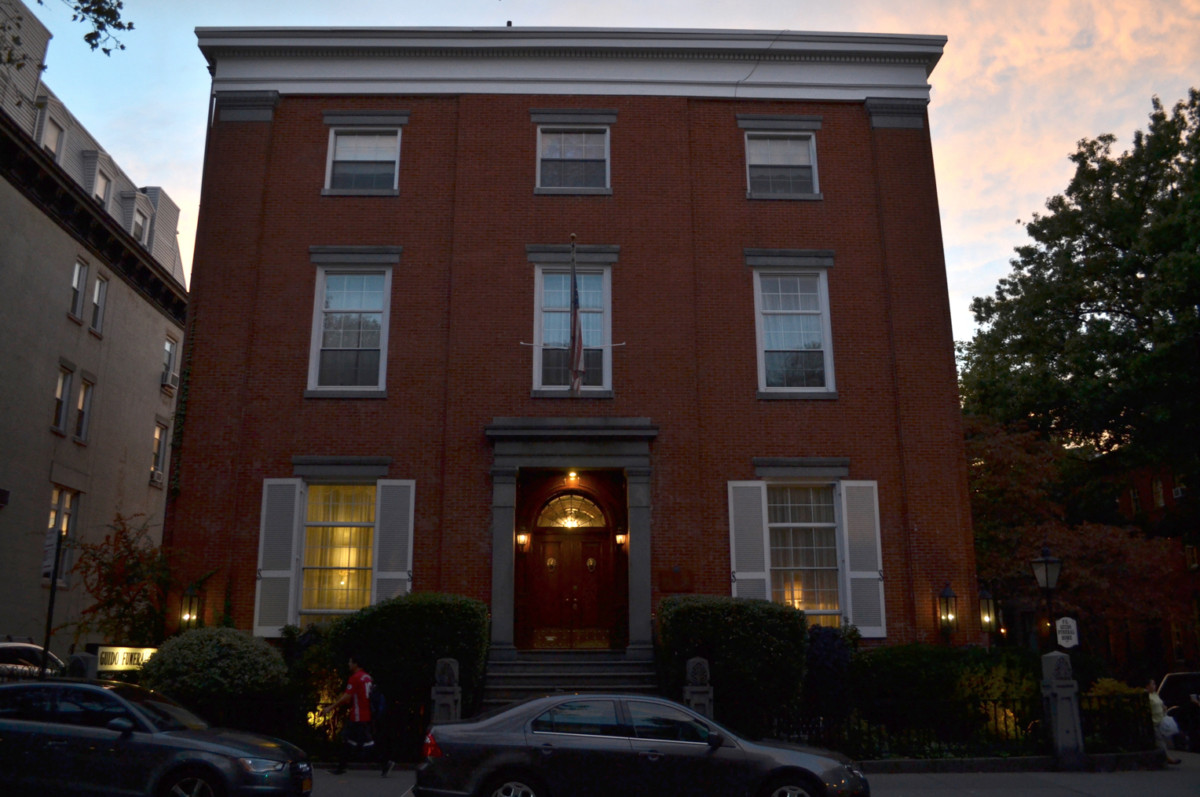
At 440 Clinton Street, tucked away beneath rows of trees and townhouses, stands a three-story crimson brick and stone house. The structure fits well with the many impressive and preserved buildings in quiet, residential Carroll Gardens. And though it is nearly 200 years old it is still at work: The John Rankin House, as it is historically known, is the site of the F.G. Guido Funeral Home, a family operated business since 1883.
The landmark building is a designated New York City landmark, and also listed under the National Register of Historic Places. It is located in an area already home to a national historic district comprised of late 19th century row houses, and is mere blocks away from the largely historic brownstone neighborhood of Cobble Hill. But the Rankin House is also unique in what it is not—a row house, or a brownstone. The Greek Revival-style mansion, completed around 1840, belonged to John Rankin, a wealthy merchant. The architect is unknown.
At the time of completion, the area was “rural farm country,” and clipper ships sailing into New York Harbor could be seen from its west-end windows. Needless to say, the house offered “a magnificent view of the bay,” according to a Landmarks Preservation Document. Today, the coveted brownstones seen from the windows serve as a constant reminder of the home’s distinctiveness in the neighborhood.

In 1966, The Landmarks Preservation Commission deliberated on the proposed designation of the house as a Landmark. The Rankin House document describes the building as “austere looking” and “imposing in size and impressive in appearance.” Its “measured scale and classic orderliness,” the document continues, with its “enriching” stone pilasters and “carved anthemion motifs” characterize the building with “dignity and serenity.”

Two years later the house became a New York City Landmark. “It is an asset to the community where it stands,” the 46-year-old document reads. “It is one of the finest Greek Revival residences in New York City.” The John Rankin House was subsequently added to the National Register of Historic Places, in November 1978.
Although the building currently houses the F.G. Guido Funeral Home, the original place of business for the funeral home was on President Street. It wasn’t until much later, in 1959, when Frank Guido, the funeral home’s fifth-generation director, purchased the Rankin House—for $60,000—with his father’s help. The home is valued at approximately $1.5 million today, according to public documents. “Every week we get offers, speculators,” Frank said. “But we’re not for sale.”

To this day, the funeral home maintains much of its original appearance, save for a garage and a chapel—later additions for business, according to Brownstoner.com. Inside, the building displays a late 19th century aesthetic, including Victorian mantelpieces and even a couple of horse drawn hearses still in use. A 1888 Studebaker carriage is available if a customer requests it, although that only happens once or twice a year.

Frank acknowledges that the beauty of the building drew him to purchase it, but restoring the late 1800s look to the home was no simple task.
“It took eleven months to renovate the home after we bought it,” said Frank Guido, now 81. He recalls the building’s use as a boarding house prior to his purchase when he was in his twenties (or “boding” house, as he jokingly referred to its unsightliness at the time).
The building, although well preserved, does not mean that the items around the home are preserved 19th century artifacts, too. In fact, some of the paintings and decorative items were purchased in flea markets and at estate sales. “That table there cost thirty-five dollars,” Guido said, pointing to a slender wooden table at one corner of the Gold Room.

Still, the home maintains a regal, Victorian flair, with nine-foot doors, a French Walnut staircase, and 16 fireplaces.
Guido continues to live in the John Rankin House, where he and his wife raised his two children, a daughter and a son, in the upper floors of the home. Still very much involved in the business, Guido works alongside his daughter Maria-Ray Guido, the funeral director.
For all the home’s history, which Guido learned by spending half a day “at the bottom of the Supreme Court” almost sixty years ago, he describes the building’s trajectory quite succinctly: “From the ridiculous to the sublime.”



Leave a Reply